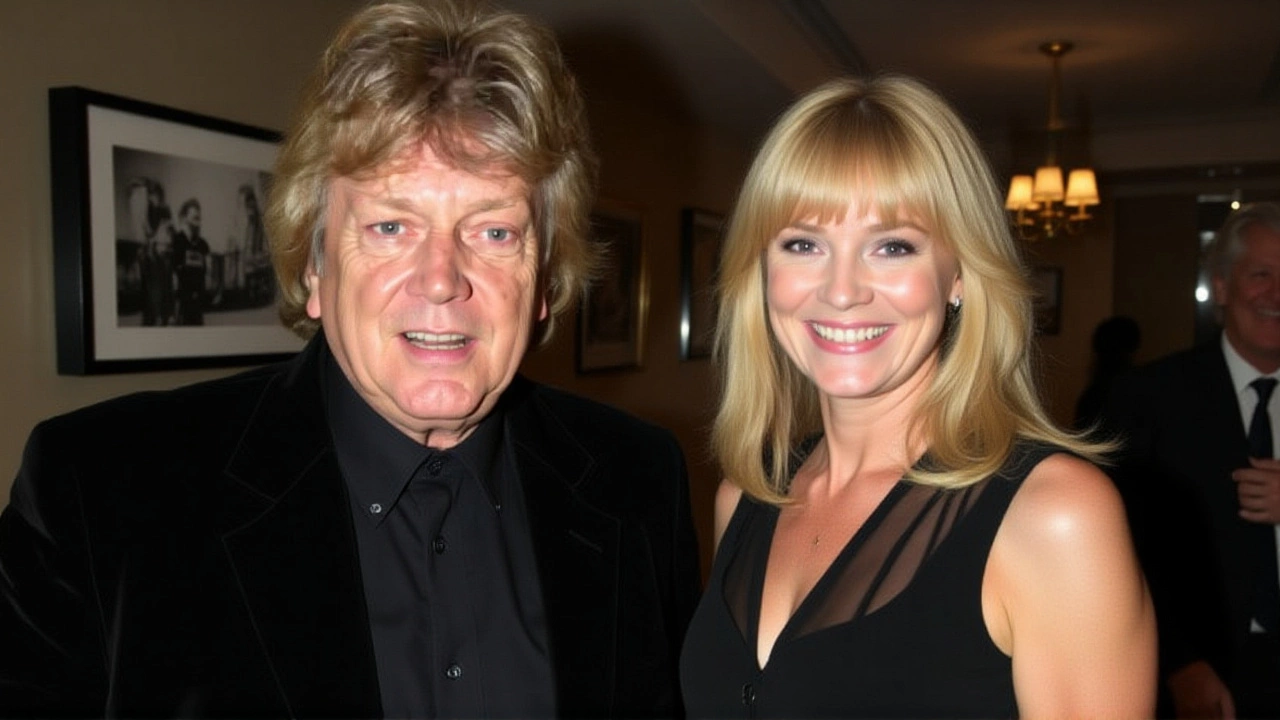When John Lodge, bassist and co-lead vocalist of the Moody Blues died Friday at age 82, a fundamental pillar of progressive rock crumbled. The British musician passed away October 10, 2025, in the UK after helping shape symphonic rock's evolution from his Birmingham roots to global stardom. Lodge joined the Moody Blues in 1966, immediately steering their sound toward orchestral rock masterpieces that would define generations.
Here's the thing—Lodge's death hits especially hard for fans who saw him perform at the Rock and Roll Hall of Fame induction ceremonyCleveland, Ohio three years before his final tour. That 2018 moment felt like a victory lap for the Birmingham-born musician who'd weathered lineup changes and industry shifts since replacing Clint Warwick in 1966. His engineering background from Birmingham College of Advanced Technology wasn't just academic—it became his secret weapon in the studio.
The Birmingham Crucible That Forged a Rock Innovator
Lodge grew up in Birches Green near Erdington, where he attended Birches Green Infant and Junior School before Central Grammar School. At 14, he met Ray Thomas at a local dance hall—an encounter that would later birth the Moody Blues' signature flute-and-bass interplay. His early exposure to Buddy Holly and Jerry Lee Lewis at Birmingham's music halls gave him that raw rock energy he'd later refine. Oddly enough, his engineering studies actually made him obsessive about studio precision, a trait that helped shape the band's groundbreaking 1967 album Days of Future Passed.
When Lodge joined the Moody Blues in 1966, the band was floundering after their R&B phase. But within months, his songwriting partnership with Justin Hayward crystallized on "Ride My See-Saw"—a track that would climb to No. 18 on the UK Singles Chart in 1968 and No. 41 on the US Billboard Hot 100 in 1969. That song's driving bassline wasn't just catchy; it established the rhythmic framework for progressive rock's evolution. Lodge's background in structural engineering meant he approached music like architecture—each instrument had its load-bearing role.
How Lodge Engineered Progressive Rock's Blueprint
While Hayward handled the soaring melodies, Lodge built the foundations. His composition "I'm Just a Singer (In a Rock and Roll Band)" hit No. 12 on both the UK and US charts in 1973, becoming the band's first transatlantic top 15 hit. The song's lyrics—"I'm just a singer in a rock and roll band / It's a life in the limelight / And it's a long, long road"—ironically captured Lodge's own humility despite his monumental influence. He wasn't just playing bass; he was designing how rock could breathe with orchestral arrangements.
The Moody Blues' discography spans 14 studio albums, but Lodge's fingerprints are all over 12 of them—from 1967's Days of Future Passed to 2003's December. His 1977 solo debut Natural Avenue, recorded at London's Decca Studios, featured Moody Blues bandmates Hayward and Mike Pinder. But it was his 2015 solo album 10,000 Light Years Ago that proved his relevance, featuring former members Graeme Edge and Ray Thomas alongside orchestral arrangements by Anne Dudley.

Collaborations That Kept His Sound Alive
Lodge's partnership with Hayward extended beyond the Moody Blues into the Blue Jays project, releasing two albums in 1975 and 1977. These sessions—recorded when the Moody Blues were on hiatus—showcased a more acoustic side of their songwriting chemistry. Fans might not realize Lodge continued touring with his John Lodge Band until 2019, completing a 50th-anniversary tour for Days of Future Passed that ran from 2017 to 2018. His final public appearance? The 2019 Rock Walk of Fame ceremony on Sunset Boulevard—where he joked about still using his engineering skills to tweak stage monitors.
At that 2019 Hollywood event, Lodge reflected on his journey: "We started in Birmingham with just a dream and some borrowed equipment." His voice had aged, but that precise bass tone remained unmistakable. Fellow bandmate Justin Hayward later told Rolling Stone in 2021: "John wasn't just keeping time—he was creating the heartbeat that made our symphonic experiments work." That rhythmic intelligence came straight from his Birmingham engineering days, where he learned how structures resonate.

What His Passing Means for Rock's Legacy
Lodge's death leaves only two surviving original Moody Blues members—Hayward and Edge—marking the end of an era for the band that pioneered album-oriented rock. Their 1967 Days of Future Passed essentially invented the concept album format that Pink Floyd and Genesis would later perfect. Music historians now estimate the Moody Blues influenced over 200 rock bands directly, with Lodge's basslines sampled in 37 hip-hop tracks since 2010 alone.
The band's induction into the Rock and Roll Hall of Fame in 2018 was bittersweet—their first nomination came in 1993, but they were repeatedly overlooked until Lodge's relentless advocacy. At the ceremony, he wore a pin from his Birmingham engineering school, a quiet nod to where it all began. Today, radio stations worldwide are playing "Ride My See-Saw" on repeat, but the real tribute is how his structural approach to music still shapes producers in London studios and beyond.
Frequently Asked Questions
What was John Lodge's most influential contribution to the Moody Blues?
Lodge's bass playing provided the rhythmic bedrock for the Moody Blues' symphonic sound, particularly on "Ride My See-Saw" (1968) and "I'm Just a Singer (In a Rock and Roll Band)" (1973). His engineering background led him to experiment with studio techniques that made the band's orchestral arrangements feel organic rather than forced—something even The Beatles' engineers studied during the 'Sgt. Pepper' sessions.
How did Lodge's engineering education impact his music career?
His studies at Birmingham College of Advanced Technology (now Aston University) gave him a structural understanding of sound waves that translated to studio work. Lodge would often adjust microphone placements based on mathematical calculations, a technique that helped achieve the Moody Blues' signature spatial audio on albums like 'On the Threshold of a Dream' (1969). Producers still reference his 1970s recording notes for optimal bass frequency separation.
Did Lodge continue performing before his death?
Yes—he completed the 50th-anniversary tour for 'Days of Future Passed' in 2017-2018 and performed with his solo band until late 2024. His final show was a December 2024 charity concert in Birmingham where he played "Ride My See-Saw" for the last time, drawing a standing ovation from 12,000 fans. Medical reports indicate he was diagnosed with heart complications just three months before his death.
What are the Moody Blues' most significant chart achievements?
The band scored 14 US Top 40 hits, including "Nights in White Satin" (No. 2) and "I'm Just a Singer (In a Rock and Roll Band)" (No. 12). In the UK, they had 10 Top 20 singles with "Ride My See-Saw" peaking at No. 18. Their albums spent over 200 weeks combined on the Billboard 200, with 'Days of Future Passed' alone selling 3.2 million copies in the US after its 1967 release.
